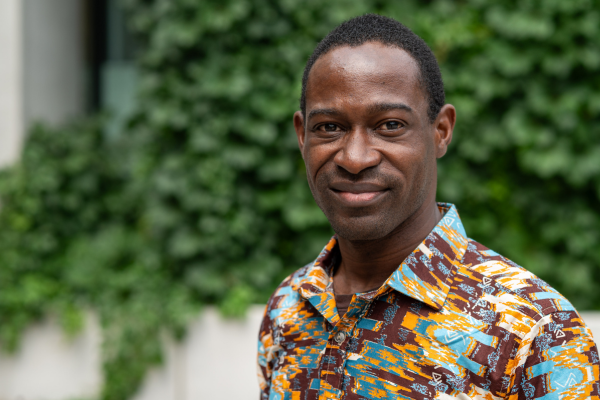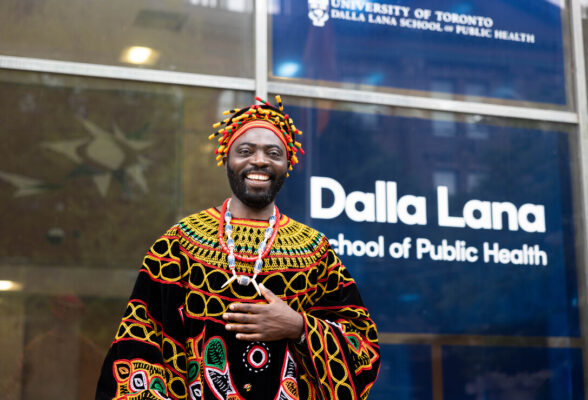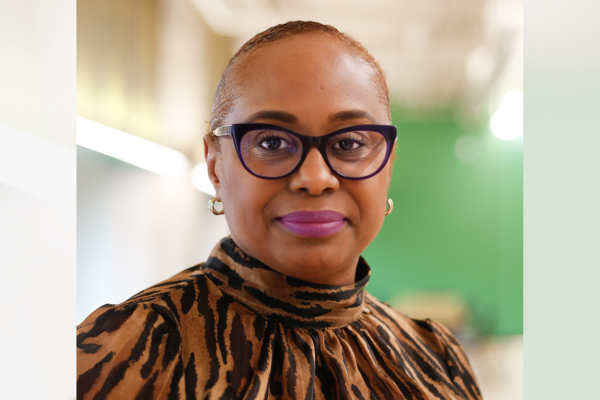Holland Bloorview and BRN collaboration advances research to highlight experiences of racialized children and youth with disabilities in Canada


De-Lawrence Lamptey has dedicated his career to understanding the experiences of racialized children and youth with disabilities in Canada.
As the inaugural EMBARK scientist at the Holland Bloorview Kids Rehabilitation Hospital, Lamptey’s research is motivated by his personal experiences with cerebral palsy. His research will help ensure that governments, policymakers and advocacy groups can address the needs of children and youth with disabilities to support them in reaching their full potential.
“Having been able to overcome many of the barriers that I faced as a person with a disability, I resolved very early on in life to do whatever I could to help kids with disabilities overcome barriers in order to support their life goals,” says Lamptey, a recipient of the Black Research Network’s (BRN) 2024 IGNITE grant.
The EMBARK program – which stands for Empowering Black Academics, Researchers and Knowledge creators – launched in 2022 as a collaboration between Holland Bloorview and the BRN. The goal behind the program, the first of its kind in Canada, is to amplify diverse Black voices in childhood disability research and address barriers that Black scholars face to achieve successful academic careers.
To understand the group’s experiences, Lamptey is currently focusing on household food insecurity, mental health and physical health of children and youth in Canada who are two to 17 years old. To do this, he is utilizing data retrieved from caregiver’s reports from the 2019 Canadian Health Survey on Children and Youth (CHSCY).
Preliminary findings indicate that there is a significant correlation between childhood disability, racial and ethnic identity and household food insecurity in Canada. Lamptey’s data analysis also reveales that childhood disability increased the probability of a caregiver perceiving their child’s health as poor.
The survey involved about 47,800 caregivers. About five per cent identified their children and youth as Indigenous, and 31 per cent identified their children and youth as a visible minority.
Approximately 11 per cent of 46,000 caregivers indicated that their children and youth had at least one functional difficulty, such as walking, self-care and communication, which was used to denote the presence of disability. The survey included the Child Functioning Module developed by the United Nations Children’s Fund and the Washington Group on Disability Statistics.
Food insecurity high amongst Black and Indigenous children and youth with disabilities
A 2023 study by Statistics Canada found that single mothers, Black and Indigenous families are impacted the most by food insecurity.
Using the 2019 CHSCY, Lamptey’s preliminary findings revealed that Black and Indigenous children and youth with disabilities were approximately three times more likely to experience household food insecurity compared to non-Indigenous and non-racialized children and youth without disabilities.
Meanwhile, Black and Indigenous children and youth without disabilities were approximately two times more likely to experience household food insecurity. The study did not include children and youth who live on Indigenous reserves or settlements.
“Children and youth with disabilities are more likely to experience food insecurity compared to those without disabilities in Canada,” Lamptey says.
“However, when we combined race and disability together, we found that racialized children and youth with disabilities are more likely to experience greater levels of food insecurity in Canada, which race alone, or disability alone is insufficient to explain.”
The factors contributing to household food insecurity for families of children and youth with disabilities are varied, Lamptey explains.
For example, household food insecurity is associated with income. Caregivers are more likely to work part-time or forgo employment opportunities to support the complex needs of their children and youth with disabilities. Caregivers may also take on additional financial costs for aids or services for their children and youth with disabilities. This increased financial burden on families elevates the risk of household food insecurity, Lamptey says.

Another project Lamptey is leading investigates caregivers’ perception of the mental and physical health of their children and youth using the 2019 CHSCY. He found that childhood disability was a stronger predictor of caregivers’ perception of their children and youth’s mental and physical health.
Although disability does not necessarily imply that children and youth are unhealthy, children and youth with disabilities often have significant health needs compared to their peers without disabilities.
Furthermore, a 2022 journal article published by the Canadian Periodical for Community Studies outlined that children and youth with disabilities are more likely to experience poor mental health than their peers. Factors contributing to poor mental health (which vary depending on the type of disability), include risk of social isolation or internalizing behaviours stemming from difficulties forming quality peer relationships.
Filling the research gap to advocate for families
Data about the intersection of race and ethnicity in relation to childhood disability has scarcely been collected through national studies, surveys or reports in Canada.
“There are possible reasons why these gaps exist,” Lamptey says. “They could include time constraints for families to participate in research. In addition, immigrant families may experience mistrust with what researchers will do with their data,” Lamptey says.
In addition to that, there is also a need for more robust data collection.
In a recent presentation of his preliminary research, Lamptey highlighted limitations of the 2019 CHSCY. One was the broad definition of disability, which makes it difficult for researchers to identify the unique barriers and needs experienced by children and youth with specific disabilities. The survey also did not represent children who live in foster homes or on Indigenous reserves or settlements – which has the potential to dismiss systemic inequities.
Lamptey’s EMBARK research will act as a foundation to document the experiences of racialized children and youth with disabilities during and post COVID-19 pandemic. With the help of the BRN IGNITE grant, Lamptey has hired a research assistant to support his research activities.
He hopes to explore changes between the 2019 and 2023 cycles of the CHSCY to examine the impacts of the pandemic on the health and well-being of children and youth with disabilities and their families.
“My ultimate hope is to be able to better understand the unique experiences of racialized children and youth with disabilities in order to provide the necessary evidence that advocacy groups, policymakers and program administrators can use to support racialized children and youth with disabilities and their families,” Lamptey says.







